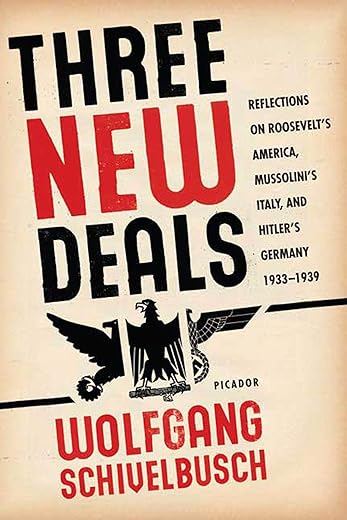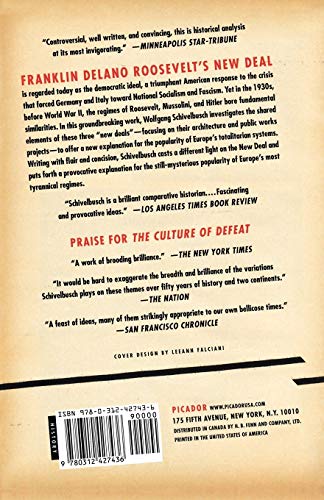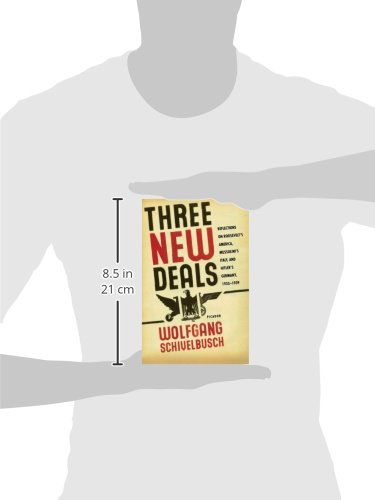Three New Deals: Reflections on Roosevelt’s America, Mussolini’s Italy, and Hitler’s Germany, 1933-1939
£12.30
FDR’s New Deal is today regarded as the democratic ideal, the positive American response to a crisis that forced Germany and Italy toward National Socialism and Fascism.Yet in the 1930s, these regimes were not considered entirely antithetical. In this groundbreaking work, Wolfgang Schivelbusch investigates the shared elements of these three new deals – focusing on their architecture and public works projects – to offer a new explanation for the popularity of Europe’s totalitarian systems. Writing with flair and concision, Schivelbusch casts a different light on the New Deal and puts forth a provocative explanation for the still-mysterious popularity of Europe’s most tyrannical regimes.
Read more
Additional information
| Publisher | Illustrated edition (27 Nov. 2007), Picador Paper |
|---|---|
| Language | English |
| Paperback | 258 pages |
| ISBN-10 | 0312427433 |
| ISBN-13 | 978-0312427436 |
| Dimensions | 13.97 x 1.47 x 21.59 cm |













by Mervyn Hagger
I bought this book with several others when I was researching the history of the New Deal in the USA, In American fascism was originally a cloned variation of Mussolini’s attempts to create a new economic order that was branded as the New Deal. Mussolini being a darling of the elite in both the USA and UK at the time, But after the US Supreme Court waded in and began to strike down laws underpinning Roosevelt’s New Deal; he kept the name but changed its application. After WWII, the word fascism often became interchanged with the words ‘National Socialist’ (Nazi), without a proper understanding of the meaning of either word,